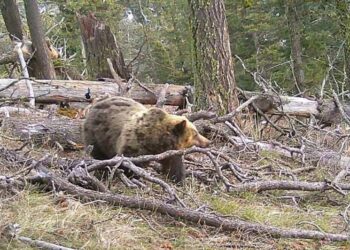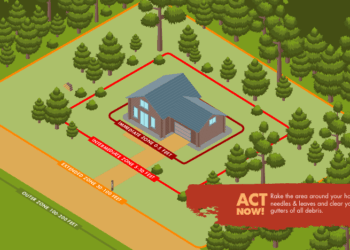By Pepper Trail WRITERS ON THE RANGE
Giant sequoias come as close to immortality as living organisms can. Many live over a thousand years, an almost unimaginable span of survival in the face of all of nature’s challenges.
So, it comes as a shock to read that over 10 percent of all the giant sequoias on Earth – thousands of trees – were killed in last year’s Castle Fire in the Sierra Nevada Mountains. When the immortals die, we can’t deny that we have entered a time of ecological chaos.
For years now, the landscapes of the West have been shifting before our eyes. Familiar ecosystems are becoming … something else. The dead sequoias ask: What will that “something else” be?
It’s tempting to imagine that ecosystems will simply move, relocating to stay within their preferred climatic conditions. Where I live in southern Oregon, there is a well-defined succession of plant communities from the hot, dry valleys to the cool, wet mountain peaks. So, predictions about responses to climate change are often expressed in relation to elevation: for example, we expect higher temperatures to cause pine forests to “move up the mountainsides,” making room for expanding oak woodlands.
To see if that’s realistic, let’s look at California’s Sierra National Forest, between Yosemite and Kings Canyon National Parks. Following a drought and resulting pine beetle outbreak, a staggering 58 percent of the trees in the Sierra National Forest died between 2014-2017.
Forest service biologists found that mortality was especially high among the largest ponderosa pines, and that new seedlings were mostly incense cedar and oak species, “representing a potential long-term shift in composition from forests that were dominated by P. ponderosa.”
So, will these Sierra pine forests discreetly withdraw to cooler and wetter higher elevations? Will oaks move in to replace them? Given a century or two, maybe. But in the time frame of the next few decades, the answer is almost certainly no.
Change is occurring with unprecedented speed, and transitions will not be orderly and gradual. They will be abrupt and often violent, and in forest ecosystems will be driven by that agent of chaos, wildfire.
Individual trees don’t move – if conditions become unsuitable, they die, and dead trees are fuel. In 2017, the Railroad Fire burned over 12,000 acres in the Sierra National Forest. In 2018, this was followed by the 96,000-acre Ferguson Fire. In 2020, the Creek Fire burned a staggering 375,000 acres in that national forest.
And just south of the Sierra National Forest, 2020’s Castle Fire burned almost 175,00 acres in the Sequoia National Forest and Giant Sequoia National Monument. Fueled by huge numbers of beetle-killed dead trees, these mega-fires consumed normally fire-resistant mature pines and giant sequoias, and of course all the seedlings of oaks, incense cedar and other plants beginning to establish a new forest.
Unfortunately, the situation in the Sierra National Forest is not unusual. California (and the West) is burning everywhere. Seventeen of the 20 largest wildfires ever recorded in California have occurred since 2003, and five of the six very largest all happened last year.
Repeated intense wildfires destroy the seedbank of trees, and leave behind not a more adaptable forest but a coarse scabland of weeds and invasive grasses.
I know many federal and private land managers. They are well aware of the implications of climate change, and are doing their best to reduce fuel loads and to help plant communities transition to the new conditions. So were the managers of the Sierra National Forest. But in the face of relentless warming and drought it made little difference.
Humanity and everything living has hit a hard reboot. The planet is resilient, and life will eventually stabilize, but that may take centuries. In the meantime, is there anything can we do?
First, of course, we must drastically cut CO² and methane emissions, to avoid the worst climate change scenarios. Next, we need to preserve linkages, to give plants and animals escape routes as they seek the conditions they need.
Finally, we may need to take an active hand, moving key species to new areas as their former habitat is lost. I have my doubts that we possess the ecological wisdom required, but for some species it may be their only hope.
Pepper Trail is a contributor to Writers on the Range, writersontherange.org, a nonprofit dedicated to spurring lively conversation about the West. He is a biologist and writes in Oregon.













